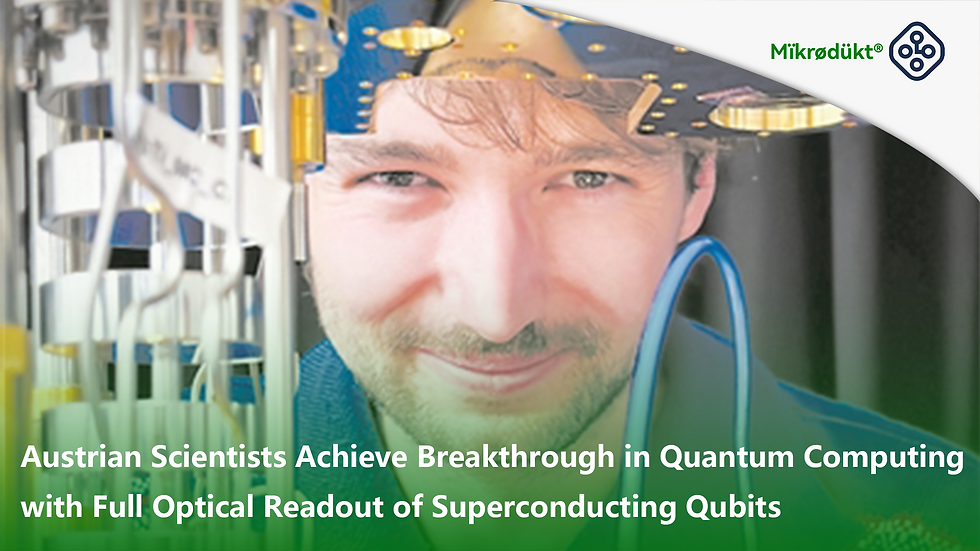
21. Feb. 2025
A team from the Institute of Science and Technology Austria (ISTA) has achieved a groundbreaking advancement in quantum computing by successfully realizing full optical readout of superconducting qubits. This innovation significantly reduces the reliance on low-temperature hardware and allows for more scalable quantum computing networks, paving the way for room-temperature superconducting quantum computers connected via fiber optics.
Vienna, Austria – Researchers from the Institute of Science and Technology Austria (ISTA) have made a significant breakthrough in the field of quantum information by successfully achieving the full optical readout of superconducting qubits. This pioneering advancement paves the way for increasing the number of qubits available for computation, and lays the foundation for building superconducting quantum computer networks that can operate at room temperature, connected via fiber optics. The findings have been published in the latest edition of Nature Physics.
Superconducting qubits are a promising candidate for building large-scale quantum computers due to their robustness and versatility. However, their scalability has been limited by the reliance on electrical signals and the need for low-temperature hardware. The breakthrough by the ISTA team addresses these challenges, making it possible for quantum bits to "understand" information transmitted through optical fibers, significantly reducing the need for low-temperature components in the measurement process.
The team developed a novel method to convert optical signals into microwave frequencies that qubits can recognize, and then convert the microwave responses from the qubits back into optical signals. This process enables infrared light to be sent to qubits without disrupting their superconducting properties. By using optoelectronic transducers as switches, qubits can now be directly connected to the external world, allowing for more efficient interaction between qubits and their environment.
A key challenge in quantum computing is the need for thousands, if not millions, of qubits to perform meaningful calculations. However, current infrastructure struggles to meet the cooling demands required for measuring these qubits. This new technology reduces the thermal load during superconducting qubit measurements, which could overcome current technological limitations, allowing a greater number of qubits to be used in practical computations.
Additionally, this innovation simplifies traditional readout systems, reduces errors caused by electrical signals, and decreases the dependency on expensive and complex electrical components. By replacing traditional electrical components with optoelectronic sensors, the system becomes more stable, efficient, and cost-effective. This breakthrough also supports the use of fiber-optic connections to link multiple quantum computers, further expanding the number of superconducting qubits available for use in quantum computing, marking a major step forward in the field.
